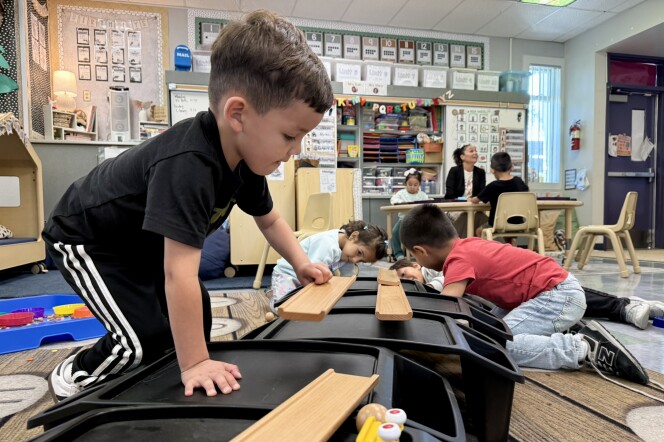With our free press under threat and federal funding for public media gone, your support matters more than ever. Help keep the LAist newsroom strong, become a monthly member or increase your support today.
This archival content was originally written for and published on KPCC.org. Keep in mind that links and images may no longer work — and references may be outdated.
Earthquakes Away From Fault Lines Caused By Movement Under Plates, Study Says

This 2015 article is getting some notice in the wake of a 4.8 magnitude quake west of Manhattan on April 5, 2024, a region not known for seismic activity. We have tips and resources below.
It is clear that earthquakes in areas like Los Angeles happen because they are near tectonic plate boundaries that rub horizontally against each other. There is not much information known about quakes that happen in places don't sit near plate lines — places like the intermountain area of the United States.
A team of scientists at the University of Southern California have now gathered information that tells us more about how these other kinds of earthquakes happen.
Lead scientist Thorsten Becker says we need to look at Earth's mantle convection to understand intraplate earthquakes. The mantle convection causes an upward push and downward pulling that may heavily contribute to where earthquakes further from plate lines are found. In his study, Becker suggests that earthquakes away from plate boundaries may happen because of movement occurring beneath plates.
Becker says the results came while studying why topography looks the way it does.
"This is completely unexpected," Becker said in an interview. "It was a serendipitous discovery."
The study was set primarily between the basin and range in the Colorado Plateau and around the Snake River Plane, which experience quakes, although the area is not close to a plate boundary. Becker said the study didn't necessarily apply to only intraplate earthquakes that happen in the U.S., but those that occur in other places around the world, like the Mediterranean.
"Our argument is that it's the small scale convections within the mantle that seem to help set the location of where those earthquakes happen," Becker said. While he said the structure of the plate is also important to know, the convection underneath the plate also seems to be quite important.
Becker said this study, whether right or wrong, can lead to many more answers.
"This sort of study is a nice way to preceding in the future in terms of combining these different lines of evidence from seismology and geodesy to really understand those questions that people have been asking for a long time," he said.
Listen
Our podcast The Big One: Your Survival Guide is aimed at getting your attention and motivating Southern Californians to prepare for an inevitable big quake here where seismic activity is very common.
If you want to vicariously experience the moments and aftermath of a 7.8 earthquake....
If you'd like an entertaining tutorial on earthquake science...
Tips
Earthquake prep resources
We don't want to scare you, but the Big One is coming. We don't know when, but we know it'll be at least 44 times stronger than Northridge and 11 times stronger than the Ridgecrest quakes in 2019. To help you get prepared, we've compiled a handy reading list
- Your Guide To Surviving The Big One
- For Earthquakes, Forget The 'Go-Bag.' Here's How To Prepare
- How To Not Get Life-Threatening Diarrhea After A Major Earthquake
- 10 Earthquake-Related Questions To Ask Your Landlord Immediately
- How To Prepare For An Earthquake If You Have A Disability
- Listen to our Podcast The Big One: Your Survival Guide








